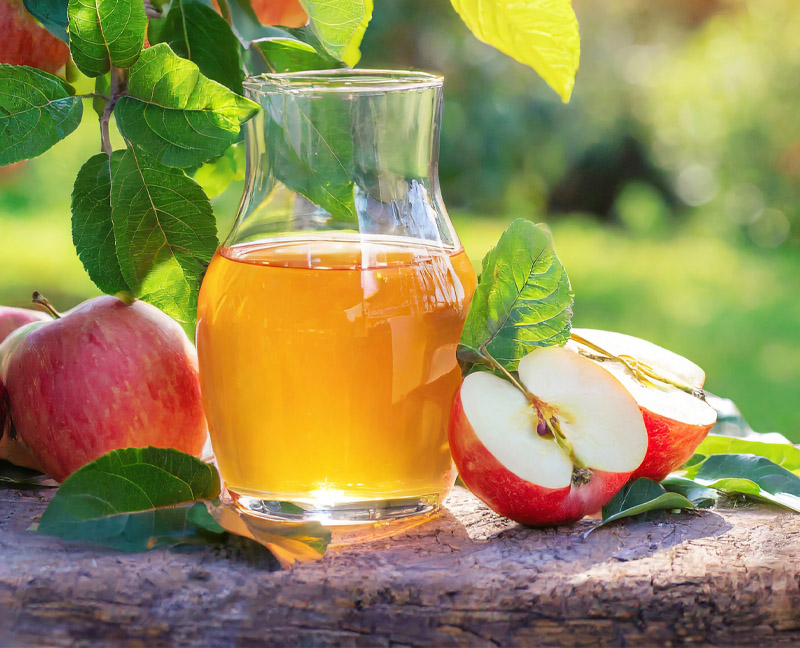What is the Apple Cider Vinegar on Feet Weight Loss Method?

The use of apple cider vinegar (ACV) for health and wellness has become a popular topic in recent years, particularly for its potential weight loss benefits. While many people are familiar with the traditional method of drinking apple cider vinegar, a newer and somewhat surprising approach has emerged—applying apple cider vinegar directly to the feet. This technique has gained traction in the weight loss community as a simple, non-invasive method to support metabolism, detoxification, and overall health.
The concept of using apple cider vinegar on your feet is based on the idea that the feet, with their numerous pressure points and high concentration of sweat glands, can absorb the beneficial properties of ACV more effectively. When applied to the feet, apple cider vinegar is believed to stimulate the body’s natural detoxification processes, helping to burn fat, boost metabolism, and reduce bloating. This method, while not widely studied, has garnered attention for its simplicity and surprising effectiveness, making it a favorite among those seeking an alternative approach to weight loss.
One of the most notable benefits of applying apple cider vinegar to the feet is its potential to aid in weight loss without the need for drastic lifestyle changes. As an increasingly popular method within the health and wellness community, many users claim that regular application of ACV has helped them shed pounds, reduce bloating, and feel more energized. Despite its simplicity, this method offers a promising addition to a holistic weight loss plan. In the following sections, we will explore the science behind this method, how it can aid in weight loss, and provide a step-by-step guide to incorporating it into your routine.
How Apple Cider Vinegar on Feet Can Aid Weight Loss
Apple cider vinegar has long been praised for its potential health benefits, and when applied to the feet, it’s believed to contribute to weight loss by leveraging its natural properties to support metabolism, reduce bloating, and improve overall digestive health. To fully understand how this method works, it’s essential to explore the science behind apple cider vinegar and how it can aid in fat burning and weight management.
Understanding the Science Behind Apple Cider Vinegar and Fat Burning
Apple cider vinegar is known for its high acetic acid content, which is thought to play a key role in supporting the body’s fat-burning processes. When consumed or applied topically, acetic acid may help regulate insulin levels, thereby improving metabolism. Insulin resistance is often linked to weight gain, especially in the abdominal area, so reducing this resistance is an important step in supporting weight loss. While much of the research focuses on oral consumption, some believe that applying apple cider vinegar to the feet can have similar effects, promoting fat loss in a less intrusive way.
Furthermore, apple cider vinegar is known for its ability to increase the body’s fat oxidation, which refers to the process of burning fat for energy. This increased fat-burning activity helps the body use stored fat as a source of fuel, contributing to a reduction in overall body fat over time. Although there is limited scientific research directly linking the topical application of ACV on the feet to weight loss, the potential benefits are backed by the positive effects that acetic acid has on metabolic functions.
How This Method May Support Metabolism and Reduce Bloating
Applying apple cider vinegar to the feet may help stimulate metabolic processes that aid in weight loss. As the body absorbs the vinegar through the feet, the acetic acid may help improve blood circulation, which in turn boosts metabolism. This increase in circulation can assist the body in breaking down fat more efficiently and enhance the body’s ability to burn calories throughout the day.
Moreover, apple cider vinegar is widely known for its ability to reduce bloating, a common issue for those who struggle with weight loss. The acetic acid in ACV helps to balance the body’s pH levels and promote proper digestion. By reducing bloating, ACV helps the stomach and intestines function optimally, reducing the feeling of fullness that can make it difficult to stick to a healthy eating routine. This effect can be particularly helpful for individuals who experience discomfort from bloating and wish to reduce water retention, which can make them appear heavier than they are.
The Impact of ACV on Appetite Control and Digestion
Apple cider vinegar also plays a role in appetite regulation. Acetic acid has been shown to suppress appetite by increasing feelings of fullness. When applied to the feet, ACV may indirectly support this process by influencing hormonal levels that control hunger and satiety. As the vinegar works to detoxify the body and regulate insulin levels, it may make it easier to manage food cravings, leading to more mindful eating habits.
Additionally, apple cider vinegar promotes healthy digestion by increasing the production of stomach acid, which is essential for breaking down food and absorbing nutrients efficiently. By improving digestion, ACV helps the body process foods more effectively, preventing excess calories from being stored as fat. This improvement in digestive health can contribute to better weight management over time.
In conclusion, while the research on the effectiveness of applying apple cider vinegar to the feet for weight loss is still in its early stages, there is substantial evidence supporting the benefits of ACV for metabolism, bloating reduction, and digestive health. By incorporating this method into your weight loss routine, you may experience a boost in your body’s natural fat-burning abilities, better digestion, and reduced bloating, all of which can contribute to a more successful weight loss journey.
Step-by-Step Guide: How to Use Apple Cider Vinegar on Your Feet for Weight Loss
If you’re interested in trying the method of applying apple cider vinegar (ACV) to your feet to aid in weight loss, it’s important to know how to use it properly to maximize the benefits. Here is a step-by-step guide that outlines the best way to apply ACV to your feet, how often to do it, and some essential safety precautions to ensure a positive experience.
Proper Application Techniques for Best Results
- Choose the Right Apple Cider Vinegar
Not all apple cider vinegars are created equal. For this method, opt for organic, raw, unfiltered apple cider vinegar that contains the “mother” — a cloudy substance made up of beneficial bacteria. This type of ACV is considered the most effective for health purposes, as it retains more of its natural enzymes and nutrients. - Dilute the Vinegar
ACV is highly acidic, and applying it directly to the skin can cause irritation or dryness. To avoid this, dilute the vinegar with water before use. A common ratio is 1 part apple cider vinegar to 2 parts water. If you have sensitive skin, consider using a gentler solution, such as 1 part ACV to 3 parts water. - Soak a Cloth or Cotton Pads
After diluting the vinegar, soak a clean cloth or several cotton pads in the solution. Gently wring out any excess liquid so it doesn’t drip when applied to the feet. - Apply to the Feet
Place the cloth or cotton pads on the soles of your feet. Make sure the vinegar-soaked cloth covers the entire foot, especially the arches, where the pressure points are believed to be most effective for absorption. You can wrap the feet in a clean towel to keep the cloth in place for a more concentrated effect. - Leave It On for 15–30 Minutes
Let the vinegar soak into your feet for about 15 to 30 minutes. During this time, you can sit back and relax, allowing the ACV to be absorbed by your skin. Some people prefer to wrap their feet with plastic wrap to help the vinegar stay in place and prevent it from evaporating. - Wash and Moisturize
After the treatment, wash your feet thoroughly with lukewarm water to remove any remaining vinegar. Since ACV can be drying, it’s important to apply a good moisturizer afterward to keep the skin hydrated and soft.
How Often and How Long You Should Use It
For the best results, it’s recommended to use the apple cider vinegar foot treatment 2-3 times per week. Some users report seeing noticeable benefits in terms of reduced bloating and improved energy levels after just a few weeks. However, results may vary, and it’s essential to remain consistent to see long-term effects.
If you have sensitive skin or experience irritation, start by using the treatment once a week and gradually increase the frequency as your skin becomes accustomed to the vinegar. If irritation persists, reduce the concentration of ACV in the solution or discontinue use altogether.
Safety Precautions to Consider When Applying ACV to Your Feet
- Patch Test: Before applying the diluted vinegar to your feet, it’s a good idea to do a patch test on a small area of your skin. This will help ensure that you don’t have any adverse reactions to the ACV.
- Avoid Open Wounds: If you have cuts, blisters, or any open wounds on your feet, it’s best to avoid using this method, as the acidity of apple cider vinegar could cause discomfort or irritation.
- Moisturize: Since ACV can dry out the skin, it’s crucial to moisturize your feet after each treatment. This will help maintain healthy skin and prevent cracks or peeling.
- Consult a Doctor: If you have any pre-existing foot conditions, such as fungal infections or skin sensitivities, it’s advisable to consult with a healthcare professional before using apple cider vinegar as a weight loss method.
By following these steps, you can safely incorporate apple cider vinegar into your weight loss routine and potentially enjoy its benefits. Keep in mind that while ACV may aid in weight loss, it should be used as part of a balanced approach, which includes healthy eating, regular physical activity, and sufficient hydration.
The Role of Apple Cider Vinegar in Detoxification and Weight Loss

Apple cider vinegar (ACV) is often touted for its detoxifying properties, and when applied to the feet, it is believed to contribute to both detoxification and weight loss. By promoting the body’s natural cleansing processes, ACV helps remove toxins that may hinder weight loss and health. In this section, we will explore the role of ACV in detoxification, how this process can aid in weight loss, and how applying it to the feet may support overall health and wellness.
The Detoxifying Properties of Apple Cider Vinegar
Apple cider vinegar is rich in acetic acid, which has been shown to support detoxification by promoting the elimination of waste products from the body. When consumed, ACV helps stimulate the liver, which is responsible for filtering out toxins. The liver also aids in metabolizing fat, and by improving its function, ACV helps promote fat burning and weight management. While most of the detoxifying effects are associated with drinking ACV, applying it topically to the feet may also help trigger the body’s detox pathways, as the feet are known for having numerous sweat glands and pressure points that can enhance absorption.
In addition, ACV is believed to help balance the body’s pH levels, creating an environment that supports proper digestion and detoxification. By helping the body maintain an alkaline state, ACV may reduce the accumulation of waste products that can contribute to bloating and sluggish metabolism. This balance not only helps to cleanse the body but can also support weight loss by improving overall digestive function.
How Detoxification Contributes to Weight Loss
Detoxification plays a significant role in weight loss, as it helps eliminate excess waste, reduces bloating, and improves the efficiency of the digestive system. When the body is overloaded with toxins, it can slow down metabolism and interfere with the body’s ability to process fat. By aiding detoxification, ACV helps to address this issue, allowing the body to function at its optimal level and promoting weight loss.
When the body is detoxified, the digestive system can work more efficiently, ensuring that nutrients are absorbed properly and that waste is eliminated without being stored as fat. This process can reduce bloating, making you feel lighter and less sluggish. Additionally, when the liver is functioning at its best, it can more effectively metabolize fat and prevent the buildup of fat cells. Therefore, using ACV as part of a detoxification regimen can directly support the body’s ability to burn fat and lose weight.
How Applying ACV to Feet Can Improve Overall Health and Wellness
While drinking apple cider vinegar is the most common method of detoxification, applying it to the feet is believed to be an effective way to support this process without the potential discomfort that some individuals experience when consuming it. As mentioned earlier, the feet are home to numerous pressure points and sweat glands that are thought to enhance the absorption of substances like apple cider vinegar. When ACV is applied to the feet, it may help stimulate circulation, which can further assist in detoxifying the body.
Regular application of ACV to the feet may also contribute to improved energy levels and better overall health. Many individuals report feeling more energized after using ACV in their wellness routine, likely due to the removal of toxins and improved metabolic function. Furthermore, ACV can help improve skin health, as its antiseptic properties may help eliminate bacteria and promote healthier, clearer skin.
In conclusion, applying apple cider vinegar to the feet can be an effective addition to your detoxification routine. By supporting the body’s natural cleansing processes and improving digestion, ACV helps promote weight loss and overall wellness. Although more research is needed to fully understand its effects, the potential benefits of this simple, natural remedy are worth exploring as part of a holistic approach to health and weight management.
Common Myths and Facts About Apple Cider Vinegar for Weight Loss
Apple cider vinegar (ACV) has garnered significant attention for its potential role in weight loss, but with that attention comes a range of myths and misconceptions. As more people turn to ACV for its alleged fat-burning properties, it’s essential to separate fact from fiction. In this section, we will debunk common myths surrounding the use of apple cider vinegar for weight loss, set realistic expectations, and provide expert insights into the effectiveness of this method.
Debunking Myths Surrounding the Use of Apple Cider Vinegar for Weight Loss
- Myth: Apple Cider Vinegar Will Cause Immediate Weight Loss
One of the most widespread myths about apple cider vinegar is that it will lead to rapid weight loss. While ACV can support weight loss by improving digestion, reducing bloating, and boosting metabolism, it’s important to understand that it is not a magic solution. Sustainable weight loss requires a combination of healthy eating, regular exercise, and lifestyle changes. ACV can be a helpful tool, but it should be part of a broader weight loss strategy, not a quick-fix solution. - Myth: Applying Apple Cider Vinegar to Your Feet Will Lead to Dramatic Fat Loss
Another misconception is that applying ACV to your feet will produce immediate or dramatic results in terms of fat burning. While the feet do have numerous pressure points that may enhance absorption, there is limited scientific research supporting the idea that topical application alone will result in significant weight loss. ACV can certainly help improve digestion and reduce bloating, but for visible fat loss, it’s necessary to incorporate other health practices like diet and exercise. - Myth: ACV Can Replace a Healthy Diet and Exercise
Many people mistakenly believe that simply adding apple cider vinegar to their routine will allow them to lose weight without making changes to their diet or exercise habits. The truth is that no supplement or remedy can replace the foundational principles of weight loss: a healthy, balanced diet and regular physical activity. ACV can complement these efforts, but it should not be seen as a substitute for healthy lifestyle habits.
Realistic Expectations and Results from Using ACV on Feet
It’s important to have realistic expectations when incorporating apple cider vinegar into your weight loss routine. While some people report feeling less bloated and more energized after using ACV on their feet, others may not notice significant changes right away. The effectiveness of this method depends on various factors, including diet, exercise, metabolism, and consistency of use.
For many individuals, using ACV as part of a holistic weight loss plan can provide gradual benefits. By improving digestion, reducing bloating, and supporting detoxification, ACV can enhance the body’s ability to shed pounds over time. However, the results will not be instantaneous, and it’s crucial to maintain consistency and patience to see the benefits.
Expert Insights into the Effectiveness of This Method
While there is limited scientific research on the direct impact of applying apple cider vinegar to the feet for weight loss, experts agree that ACV’s potential benefits are mostly attributed to its acetic acid content, which can help regulate blood sugar levels, support digestion, and reduce inflammation. Dr. Josh Axe, a renowned expert in natural health, explains that “apple cider vinegar can help with weight loss by improving digestion, balancing blood sugar, and curbing appetite.”
Experts also point out that applying ACV topically, especially to areas rich in sweat glands and pressure points like the feet, may enhance absorption. However, they emphasize that the benefits of ACV for weight loss are best experienced when used as part of a comprehensive approach to health. Dr. Axe advises that “for optimal results, apple cider vinegar should be combined with a nutrient-dense diet, regular physical activity, and sufficient hydration.”
In conclusion, while apple cider vinegar can play a role in weight loss, it’s important to understand that it is not a miracle solution. The method of applying ACV to the feet may offer benefits such as improved digestion, reduced bloating, and better overall health, but it should not be relied upon as a sole method for weight loss. By managing expectations and incorporating ACV as part of a balanced lifestyle, individuals can maximize its potential and achieve sustainable, long-term results.
Is Apple Cider Vinegar on Your Feet a Weight Loss Miracle?
Apple cider vinegar has gained popularity as a natural remedy for various health concerns, and its role in weight loss is no exception. While applying apple cider vinegar to your feet may offer some benefits, such as reducing bloating, improving digestion, and supporting detoxification, it is not a miraculous solution for shedding pounds. The key takeaway is that ACV can serve as a useful tool within a broader, holistic approach to weight loss, rather than a quick-fix solution.
By promoting better digestion and metabolism, ACV may help enhance fat-burning efforts when combined with a healthy diet, regular physical activity, and proper hydration. However, it’s essential to manage expectations and understand that real, sustainable weight loss requires a consistent, well-rounded approach. While some individuals may see benefits from using ACV on their feet, others may not notice immediate or dramatic changes. The best results come from incorporating this method into a comprehensive weight loss plan and remaining patient with the process.
In summary, apple cider vinegar can be a beneficial addition to your weight loss routine, but it is not a miracle cure. When used as part of a balanced lifestyle, it may help support the body’s natural detoxification processes and promote overall health. Whether you choose to apply ACV to your feet or incorporate it into your diet, the most important factor is consistency and commitment to a healthy, active lifestyle.

















